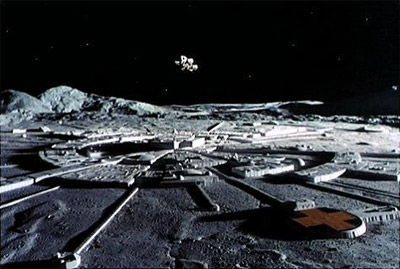We now return to our regularly scheduled speculation on outmigration.
The moon has beckoned to us probably since our first terrestrial ancestors crawled onto the mudflats and looked up into the night sky. I am fortunate to be just barely old enough to have witnessed humankind's first steps on that tantalizingly close but barren world in 1969. As a small child, the Apollo missions made a huge and lasting impression on me. Then, as a somewhat older child, I saw what a colony on the moon would look like in the future of 1999.
For decades the moon seemed to be a bit of a red-herring, from the standpoint of space exploration and colonization. Then in 2009 India's Chandrayaan 1 orbiter's Moon Impact Probe detected water ice on the moon's south pole, and then in early 2010 a lot more water ice was detected on the north pole. Suddenly the moon looked a lot more enticing.
Probably the best candidate for a permanent colony on the moon is deep within the Peary crater at the north pole. The bottom of the crater is permanently shrouded from direct sunlight and solar radiation storms, and four of the rim peaks are permanently bathed in sunlight, well-situated for solar power and also for earth communications towers. And, Peary contains substantial amounts of water ice. Take a good look at the photograph below. This may be a permanent home to humans within our lifetimes.


No comments:
Post a Comment